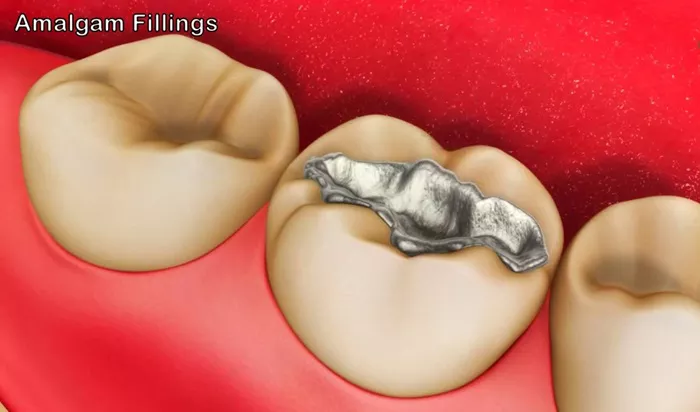Amalgam fillings have been widely used for decades to treat cavities. Made from a mixture of metals, these silver-colored fillings are durable and affordable. However, many patients now choose to remove them for health, cosmetic, or dental reasons.
Removing amalgam fillings involves replacing them with alternative materials such as composite resin. This process may vary in cost depending on several factors. This article will explain those costs and discuss important dental health topics like gum inflammation and gum disease that may influence or be affected by the removal process.
What Are Amalgam Fillings?
Amalgam fillings consist of metals such as silver, mercury, tin, and copper. They are strong and last many years but have a noticeable metallic color. Some patients choose to replace them with tooth-colored composite fillings for a more natural look.
There is also concern about mercury content in amalgam fillings, although the American Dental Association states they are safe. Despite this, removal is common for personal preference or dental health reasons.
Why Remove Amalgam Fillings?
Cosmetic Reasons
Many patients prefer tooth-colored fillings for a better smile. Amalgam fillings are visible when you talk or smile, while composite fillings blend with natural teeth.
Health Concerns
Some patients worry about mercury exposure or allergic reactions. While scientific evidence supports safety, some choose removal to avoid any risk.
Dental Health Issues
Amalgam fillings can sometimes cause cracks in teeth or leak over time. This can lead to decay underneath the filling, gum inflammation, or gum disease if bacteria accumulate.
If there is decay or infection under an old filling, removal is necessary to treat the problem properly.
How Much Does It Cost to Remove Amalgam Fillings
The cost to remove amalgam fillings can vary widely based on several key factors.
Size and Number of Fillings
Larger fillings require more work and time to remove. If you have multiple amalgam fillings, the cost will be higher.
Location of the Filling
Fillings in hard-to-reach places, like back molars, can cost more to remove due to complexity.
Replacement Material
The type of filling material used to replace amalgam affects price. Composite resin fillings tend to be more expensive than amalgam but are more aesthetically pleasing.
Dental Office and Geographic Location
Prices vary between dental practices and geographic areas. Urban areas or high-cost living regions often have higher fees.
Complexity of the Procedure
If removal uncovers decay, infection, or damage like cracks, additional treatment may be required, increasing the cost. Treating related gum inflammation or gum disease can add to expenses.
Average Cost Range for Removing Amalgam Fillings
On average, removing a single amalgam filling can cost between $100 and $500. This price typically includes:
- Removal of the old amalgam filling
- Cleaning the tooth
- Placing a new filling (usually composite)
More extensive treatments, such as root canals or crowns due to decay or damage found after removal, will increase the cost.
Additional Dental Treatments That May Affect Costs
Gum Inflammation and Gum Disease Management
When amalgam fillings are removed, some patients experience gum inflammation. This is a response to irritation or bacteria disturbance. If gum disease is present, it should be treated alongside filling removal.
Managing gum disease involves scaling, root planing, or other periodontal therapies. These treatments help reduce bacteria and prevent further damage to teeth and gums but add to the overall dental cost.
Treatment for Decay or Tooth Damage
Sometimes, decay or cracks are hidden under old amalgam fillings. Removing them may reveal these problems, requiring further care such as fillings, root canals, or even crowns. These additional procedures increase the total cost.
Insurance Coverage and Payment Options
Many dental insurance plans cover some costs of removing old fillings, especially if removal is necessary for dental health reasons like decay or gum disease. Cosmetic removal may not be covered.
Check with your insurance provider about coverage limits and copayments.
If insurance coverage is limited, ask your dental office about payment plans or financing options to manage costs.
How to Prepare for Amalgam Filling Removal
Consult with your dentist: Discuss why removal is needed and what to expect.
Review your dental health: Make sure any gum inflammation or gum disease is addressed first.
Plan financially: Get a detailed cost estimate including potential extra treatments.
Consider post-removal care: Ask about how to care for your teeth after removal to prevent further problems.
Risks and Safety Measures During Removal
Removing amalgam fillings must be done carefully to avoid releasing mercury vapors or particles. Dentists use special techniques like rubber dams and high-volume suction to protect patients during the procedure.
Proper removal reduces risk of irritation to gums or worsening gum inflammation.
Alternatives to Amalgam Filling Removal
If your fillings are intact and healthy, your dentist might advise against removal. Maintaining good oral hygiene helps prevent gum disease and tooth decay around fillings.
Regular dental visits can monitor fillings and gum health to decide when removal is necessary.
Conclusion
The cost to remove amalgam fillings varies depending on the size, number, and condition of your fillings, as well as any related dental health issues such as gum inflammation or gum disease. The average cost ranges from $100 to $500 per filling but can increase if additional treatments are needed.
Removal can improve your smile and dental health if done properly, but it is important to discuss with your dentist and plan for potential extra costs. Proper care before and after removal helps maintain healthy gums and teeth, preventing complications.

